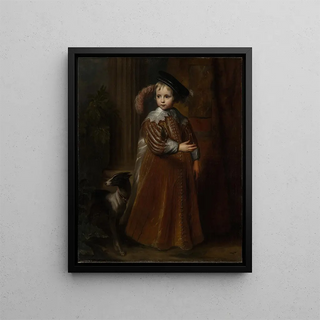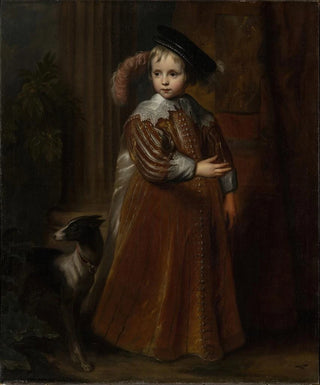Art print | Portrait of William II, Prince of Orange-Nassau - School of Antoine van Dyck


View from behind

Frame (optional)
Portrait of William II, Prince of Orange-Nassau - School of Antoine van Dyck – Captivating Introduction
The "Portrait of William II, Prince of Orange-Nassau" is an iconic artwork that captures the very essence of 17th-century aristocracy. Created by the school of Antoine van Dyck, this painting embodies both the grandeur and complexity of the depicted figure, while revealing the subtleties of Baroque painting. The art print of this portrait allows you to immerse yourself in a universe where power, nobility, and art intersect with rare intensity. Contemplating this piece, the viewer is transported to a time when every detail, every brushstroke, tells a rich and fascinating story.
Style and uniqueness of the work
The style of the work is distinguished by its striking realism and masterful use of light. Van Dyck, a master of portraiture, succeeds in capturing not only William II's physical features but also his character and presence. The prince's posture, slightly tilted, exudes an aura of confidence and dignity, while the drapery of his richly adorned costume reflects his high status. The color palette, dominated by warm and deep tones, gives the entire piece a solemn yet intimate atmosphere. Every element of the painting, from the neutral background to the details of the costume, is carefully designed to enhance the visual and emotional impact of the composition. This portrait is not merely a simple representation; it becomes a window into the prince's soul, inviting the viewer to ponder the issues of his era.
The artist and his influence
Antoine van Dyck, born in Flanders, is one of the most influential portraitists of the 17th century. A pupil of Rubens, he developed a style that combines Flemish realism with Italian elegance. His approach to portraiture redefined aristocratic representation standards, placing the subject at the heart of the composition while incorporating subtle narrative elements. Van Dyck had a prolific career, notably at the court of England, where he painted numerous members of royalty. His influence endures today, inspiring

Matte finish

View from behind

Frame (optional)
Portrait of William II, Prince of Orange-Nassau - School of Antoine van Dyck – Captivating Introduction
The "Portrait of William II, Prince of Orange-Nassau" is an iconic artwork that captures the very essence of 17th-century aristocracy. Created by the school of Antoine van Dyck, this painting embodies both the grandeur and complexity of the depicted figure, while revealing the subtleties of Baroque painting. The art print of this portrait allows you to immerse yourself in a universe where power, nobility, and art intersect with rare intensity. Contemplating this piece, the viewer is transported to a time when every detail, every brushstroke, tells a rich and fascinating story.
Style and uniqueness of the work
The style of the work is distinguished by its striking realism and masterful use of light. Van Dyck, a master of portraiture, succeeds in capturing not only William II's physical features but also his character and presence. The prince's posture, slightly tilted, exudes an aura of confidence and dignity, while the drapery of his richly adorned costume reflects his high status. The color palette, dominated by warm and deep tones, gives the entire piece a solemn yet intimate atmosphere. Every element of the painting, from the neutral background to the details of the costume, is carefully designed to enhance the visual and emotional impact of the composition. This portrait is not merely a simple representation; it becomes a window into the prince's soul, inviting the viewer to ponder the issues of his era.
The artist and his influence
Antoine van Dyck, born in Flanders, is one of the most influential portraitists of the 17th century. A pupil of Rubens, he developed a style that combines Flemish realism with Italian elegance. His approach to portraiture redefined aristocratic representation standards, placing the subject at the heart of the composition while incorporating subtle narrative elements. Van Dyck had a prolific career, notably at the court of England, where he painted numerous members of royalty. His influence endures today, inspiring






